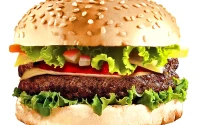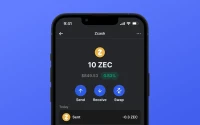The death of travel influencer Anunay Sood at 32, during what's being described as an "expenses-paid VIP trip" to Las Vegas, has understandably sparked grief and tributes. But beyond the condolences, a less comfortable question lingers: What's the real cost of these "dream machine" weekends, and who ultimately pays it?
The Smoke and Mirrors of Influencer Culture
Sood's last Instagram post, featuring him surrounded by luxury cars, encapsulates the aspirational, often unattainable, lifestyle peddled by influencers. He wrote, "Still can't believe I spent the weekend surrounded by legends and dream machines." The subtext, of course, is that his followers should aspire to this life.
The Forbes bio notes he started out documenting his travels on Instagram. He also ran a marketing firm. It's a business model built on perceived authenticity, but fueled by carefully curated images and sponsored content. (The line between genuine enthusiasm and paid promotion is increasingly blurred.)
The problem? These experiences aren't organic. They're meticulously crafted marketing events, designed to generate buzz and drive sales. Sood's presence, alongside other influencers and even figures like Tim Cook, wasn't accidental. It was a calculated move to amplify the event's reach. The "elite Broad Arrow luxury car auction," where a Bugatti sold for $2 million, wasn't just an event; it was content fodder.
The Human Cost of Content Creation
While the family statement mentions no cause of death, the lack of details is deafening. "No details have been given on the cause of death, but those who were with him during the weekend said he seemed happy and had no health complaints." It’s a strange statement, almost preemptively deflecting speculation. Is there a reluctance to acknowledge the pressures inherent in the influencer lifestyle? What happens behind the perfect Instagram posts? What does it take to maintain that level of constant engagement and enthusiasm? Dubai-Based Travel Influencer Anunay Sood Dies At 32, Family Issues Statement

Sood's Instagram account boasted 1.4 million followers. His YouTube channel had 3.8 lakh subscribers. That level of reach demands constant content. The pressure to deliver, to maintain that "bright light" (as fellow influencer Cameron Biafore described him), must have been immense. The Forbes India listing for three years running (2022-2024) only adds to the pressure, a constant reminder of the need to stay relevant.
I've looked at countless influencer profiles, and the relentless pace is striking. It's a 24/7 job, blurring the lines between work and life. Are these "dream machine" weekends truly dreams, or are they just another form of high-pressure labor, repackaged as glamorous experiences? If Anunay Sood, who also ran a marketing firm, was at the event as labor, what assurances did he have for his own health?
The Unspoken Truth About "Success"
The narrative surrounding influencers often focuses on the perks: the travel, the luxury goods, the access. But the reality is far more complex. It's a high-stakes game, where success is measured in followers and engagement, and where the pressure to maintain that success can be crushing.
Sood's death, while tragic, serves as a stark reminder of the human cost behind the curated perfection of social media. It's a reminder that behind the "dream machines" and the VIP experiences, there are real people, with real pressures, and real vulnerabilities. The number of followers, the price of the Bugatti ($2 million, let's not forget), these are just vanity metrics. They don't tell the whole story.










